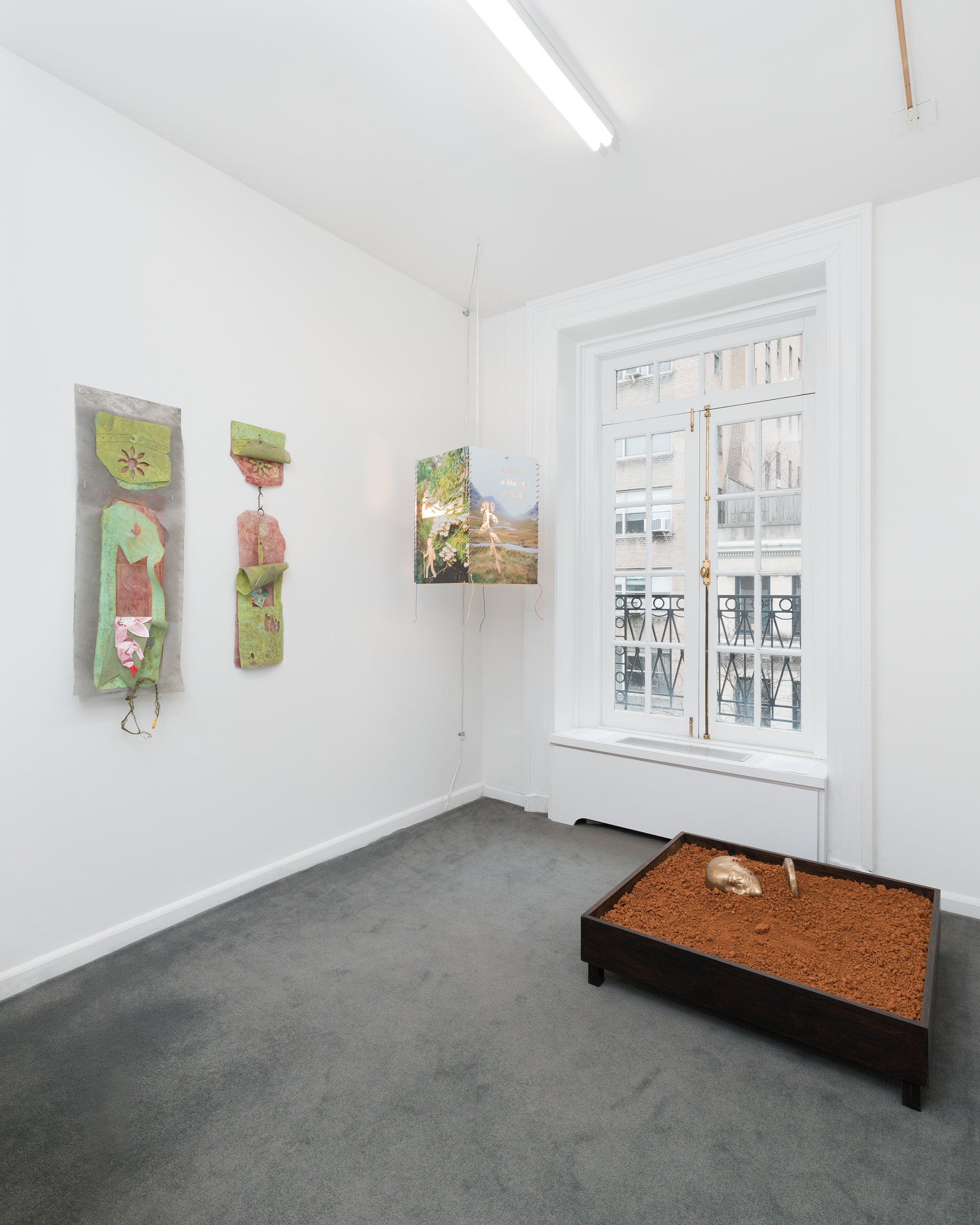Viewing Room:
Emilie Bausager, Emily Henretta, Lola Ayisha Ogbara
January 10 - February 25


The viewing room presentation this month includes three artists whose works relate to sculpture, land, and heritage.
Emilie Bausager (b. London, UK, 1992, lives and works in Copenhagen, Denmark) presents two works that relate her ongoing research of the 18th and 19th century clearances of the Highlands communities in Scotland, during which communities of people were displaced to make way for large scale sheep farming, industrialization, and tourism. Her sculpture entitled Clearance Lantern includes UV printed photographs of the Scottish Highlands juxtaposed with historical and modern laser cut symbols of the region. Inspired by a child's nightlight, the work casts shadows upon the walls, suggesting an unclear reading of history. A related work Denim Hike envisions an imagined hike through the Highlands, which Bausager pieced together in her mind before visiting the region.
Emily Henretta (b. 1982, Boston, MA, lives and works in Bronx, NY) displays two wall-based works comprised of cut and layered printed fabrics and a third composition on rice paper that includes printed, drawn, and collaged elements. The works repurpose found elements of architecture. Henretta creates stencils from architectural detritus she finds in her surroundings, by digging in her backyard in the Bronx and looking along the shores of nearby Randall's Island. Henretta salvages and gives a new purpose to architectural and decorative moldings by adapting them as elements of scuptural reliefs. The final works maintain the feel of windows, doorways, and mantles.
Lola Ayisha Ogbara (b. 1991, Chicago, IL, lives and works in Chicago, IL) presents a commemorative work entitled A Hard Ori Makes a Soft Memory comprised of a bronze sculpture in the form of a head resting gently in a bed of red clay soil. The bronze sculpture is cast from a mannequin head that Ogbara sourced from a beauty supply store. The cheeks of the final sculpture display West African facial markings, while the red clay soil that fills the bed of the sculpture was found in Alabama. Through these materials and references, Ogbara forges connections between histories and locations of the African diaspora.






